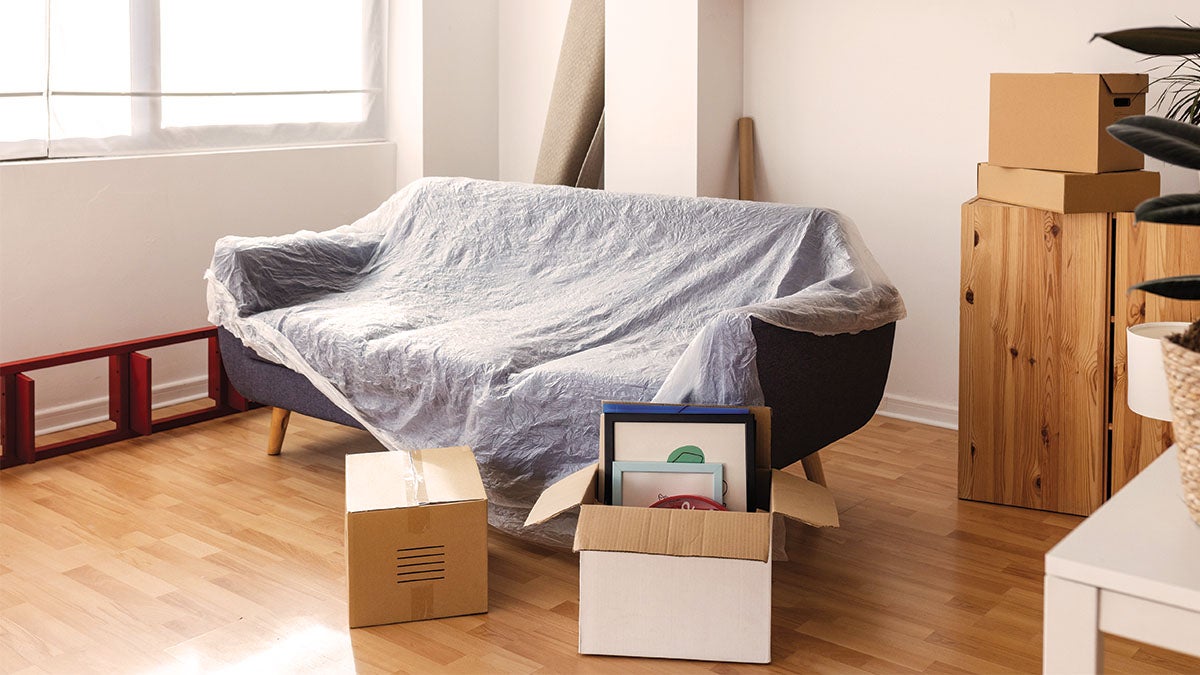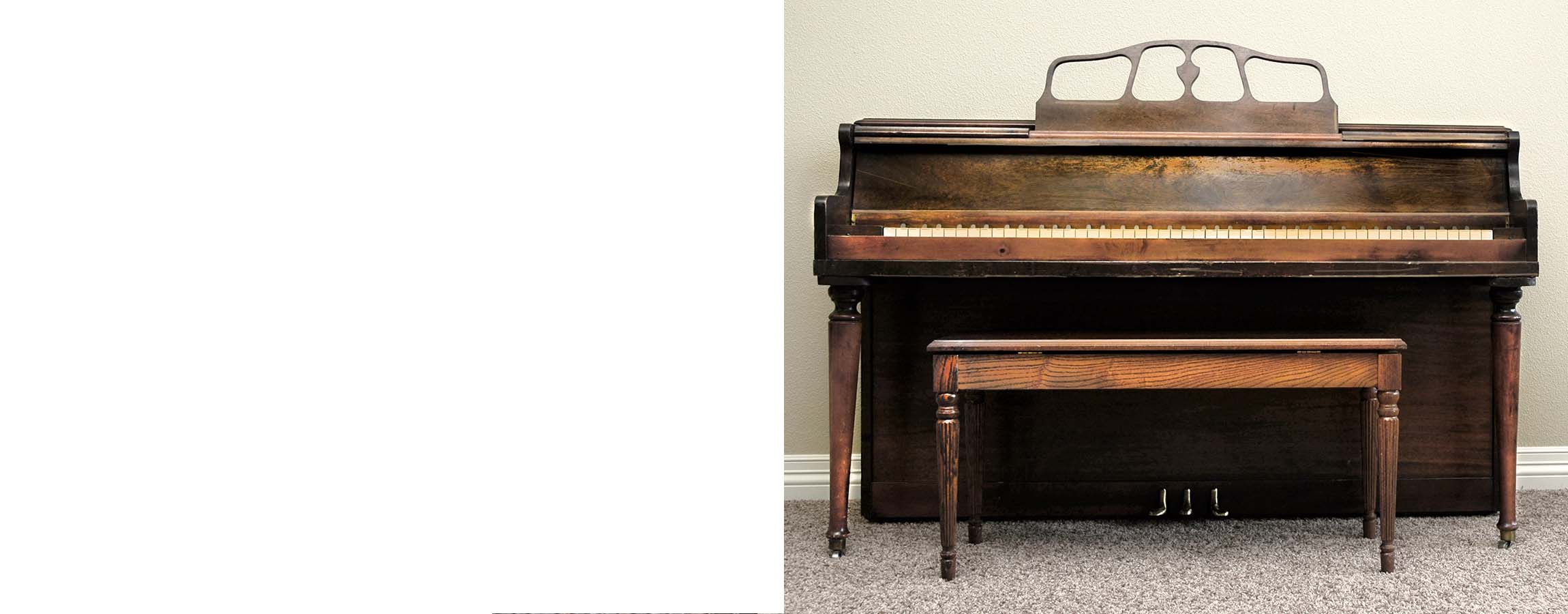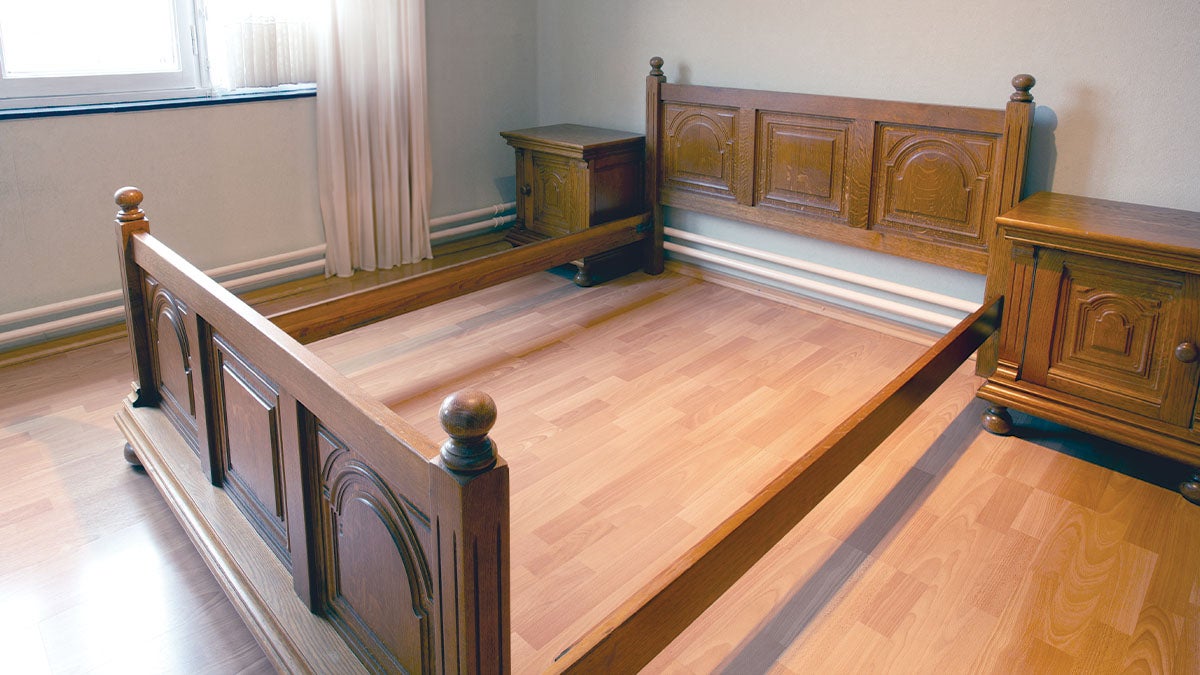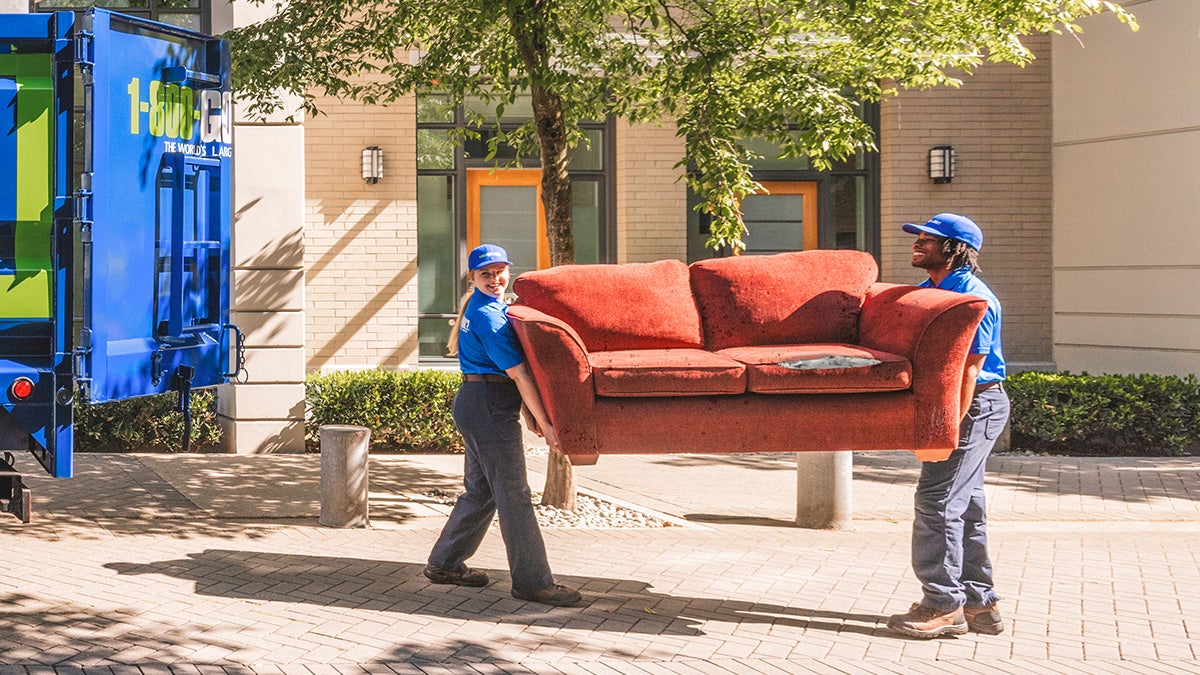Moving can be a daunting task, especially when it comes to large furniture items like couches. Whether you're relocating to a new house, getting rid of an old couch, or taking steps to recycle responsibly, disassembling your couch is a practical solution.
In this step-by-step guide, we'll walk you through the process of how to disassemble a couch for moving or disposal, making the entire endeavor more manageable and less stressful.
Table of Contents (skip to each section)
- Gather the necessary tools
- Clear the surrounding area
- Remove cushions
- Locate and remove fasteners
- Check for hidden fasteners
- Disassemble frame and arms
- Separate the backrest
- Wrap and secure disassembled parts
- Load and transport
- Let 1-800-GOT-JUNK? take away your old couch
Step 1: Gather the necessary tools
Before embarking on the disassembly process, it's crucial to have the right tools at your disposal. The complexity of couch designs can vary, so having a diverse set of tools ensures that you're prepared for any fastener or component you may encounter. Here's a more detailed breakdown of the tools you'll need:
- Screwdriver set: Phillips and flathead screwdrivers of various sizes will accommodate different screw types commonly used in couch construction.
- Adjustable wrench: Choose a high-quality adjustable wrench to loosen and tighten nuts of various sizes. This tool is particularly useful for fasteners that may be holding different parts of the couch together.
- Allen wrench set: If your couch features hex bolts, an Allen wrench set is essential. Ensure you have the correct size to fit the bolts on your couch.
- Plastic bags or containers: Use these to organize and store screws, bolts, and other small components. Labeling each bag or container helps when it comes time for reassembly.
- Zip ties or rope: Secure disassembled parts together to prevent them from shifting or getting lost during transportation.
- Blankets or bubble wrap: Protect cushions, delicate parts, and any disassembled components that may be prone to scratches or damage during the move.
Step 2: Clear the surrounding area
Create an organized and clutter-free workspace around the couch to promote a smooth disassembly process.
Clear the space around the couch by removing any furniture, decorative items, or obstacles that could impede your movement or the disassembly process. Ensure there's enough room to move around the entire couch. This allows for comfortable maneuvering as you work on different sections of the furniture.
You should also lay down protective materials, such as cardboard or furniture sliders to prevent damage to the floor. This is especially important if you're disassembling the couch on hardwood or tile surfaces.
Step 3: Remove cushions
Removing cushions is a straightforward but important step in preparing the couch for disassembly.
Before removing cushions, check for any hidden items, like loose change, remote controls, or small objects that might have slipped between the cushions. If your couch has multiple cushions, consider labeling or numbering them to simplify the reassembly process. This ensures each cushion returns to its original position.
Once removed, cover the cushions with blankets or bubble wrap and set them aside in a safe location. This prevents any accidental damage during the disassembly and moving process.
Step 4: Locate and remove fasteners
Identifying and removing the visible screws, bolts, or fasteners that hold the couch together is important. Here’s how you can go about it:
Thoroughly inspect the frame of the couch for any visible fasteners. Pay close attention to areas where different sections of the frame are joined. Choose the appropriate tool (screwdriver or adjustable wrench) based on the type of fasteners you encounter.
Start at one end of the couch and work your way around. Remove screws or bolts in a systematic manner to avoid confusion during reassembly. As you remove fasteners, place them in labeled plastic bags or containers. If different types of fasteners are used, consider sorting them separately for easy identification later.
Step 5: Check for hidden fasteners
Hidden fasteners are often concealed beneath covers or fabric flaps. Discovering and removing these may require a bit of investigation.
Carefully examine seams and joints in the upholstery for any signs of hidden fasteners. Gently pull back fabric flaps or covers to reveal screws or bolts. If available, consult the couch manual for information on hidden fasteners. Some manufacturers provide specific instructions on disassembly.
When uncovering hidden fasteners, be mindful of the upholstery to avoid tearing or damaging it. Use a gentle touch to reveal the fasteners without causing unnecessary wear.
Step 6: Disassemble frame and arms
Now that you've identified and removed visible and hidden fasteners, it's time to disassemble the main frame and arms of the couch.
If your couch has detachable arms, unscrew them from the main frame. This is often a straightforward process, but you should refer to the manual if you're unsure. Some couches have multiple sections that can be separated for easier transportation. Unscrew any connectors or fasteners joining these sections.
As you disassemble the frame and arms, keep all parts organized and labeled. Group similar components together to facilitate a smoother reassembly process. You can also take this opportunity to inspect the frame and arms for any damage or wear. Clean the exposed areas, especially if the couch hasn't been disassembled for a while.
Step 7: Separate the backrest
Once you've disassembled the frame and arms, it's time to focus on the backrest of the couch. This step requires careful attention to ensure the safe removal of this significant component.
Inspect the back of the couch to locate any screws, bolts, or fasteners holding the backrest in place. Some couches may have hidden fasteners in the upholstery or behind fabric covers.
Employ the same tools you used for the frame and arms to remove any fasteners securing the backrest. This may involve a combination of screwdrivers, wrenches, and Allen wrenches, depending on the design.
Backrests can be large and unwieldy. If the backrest is heavy or awkward to handle, consider enlisting the help of a friend to support you during removal.
As with previous steps, place any screws or bolts in labeled bags or containers. If the backrest consists of multiple sections, secure and label them to avoid confusion during the reassembly process.
Step 8: Wrap and secure disassembled parts
With all components disassembled, it's crucial to take measures to protect them during transportation.
Wrap each disassembled part with blankets or bubble wrap to prevent scratches, dents, or other damage. Pay special attention to corners and delicate areas. Bundle the wrapped components together and secure them with zip ties or rope. This ensures that parts stay connected and reduces the risk of losing small components during transit.
Label each bundle with a corresponding number or name to simplify the reassembly process. This extra step will save you time and effort when putting the couch back together.
Step 9: Load and transport
Now that your couch is safely disassembled and packaged, it's time to prepare for transportation to your new location, recycling center, or disposal site.
Moving disassembled furniture can be challenging, especially if the components are large or heavy. Enlist the help of friends, family, or professional movers to ensure a smooth and safe transport.
Choose a vehicle that can accommodate the disassembled parts without causing damage. Consider renting a moving truck or van with sufficient space.
Place the wrapped and labeled components securely in the vehicle, ensuring they won't shift during transit. Use straps or additional padding, if needed. When loading and unloading, handle each component with care to avoid any accidental damage. Follow safety guidelines, especially if the parts are heavy or awkward to carry.
If you intend to dispose of your sofa or couch, consider hiring a professional to take it away. 1-800-GOT-JUNK? can remove and dispose of your couch safely. We even recycle, donate, and repurpose old furniture when the option is available in your local community.
Let 1-800-GOT-JUNK? take away your old couch
Disassembling a couch for moving, disposal, or recycling might seem like a daunting task initially, but with a systematic approach and the right tools, it can be a manageable process. By following this step-by-step guide, you'll not only make your move more efficient but also contribute to responsible furniture disposal practices.
Your local 1-800-GOT-JUNK? team can make your old couch disappear! Call us and we’ll recycle what we can and responsibly dispose of the rest. That way, you won’t have to bother with hauling it away.
Find out more about disposing of old furniture with 1-800-GOT-JUNK?






